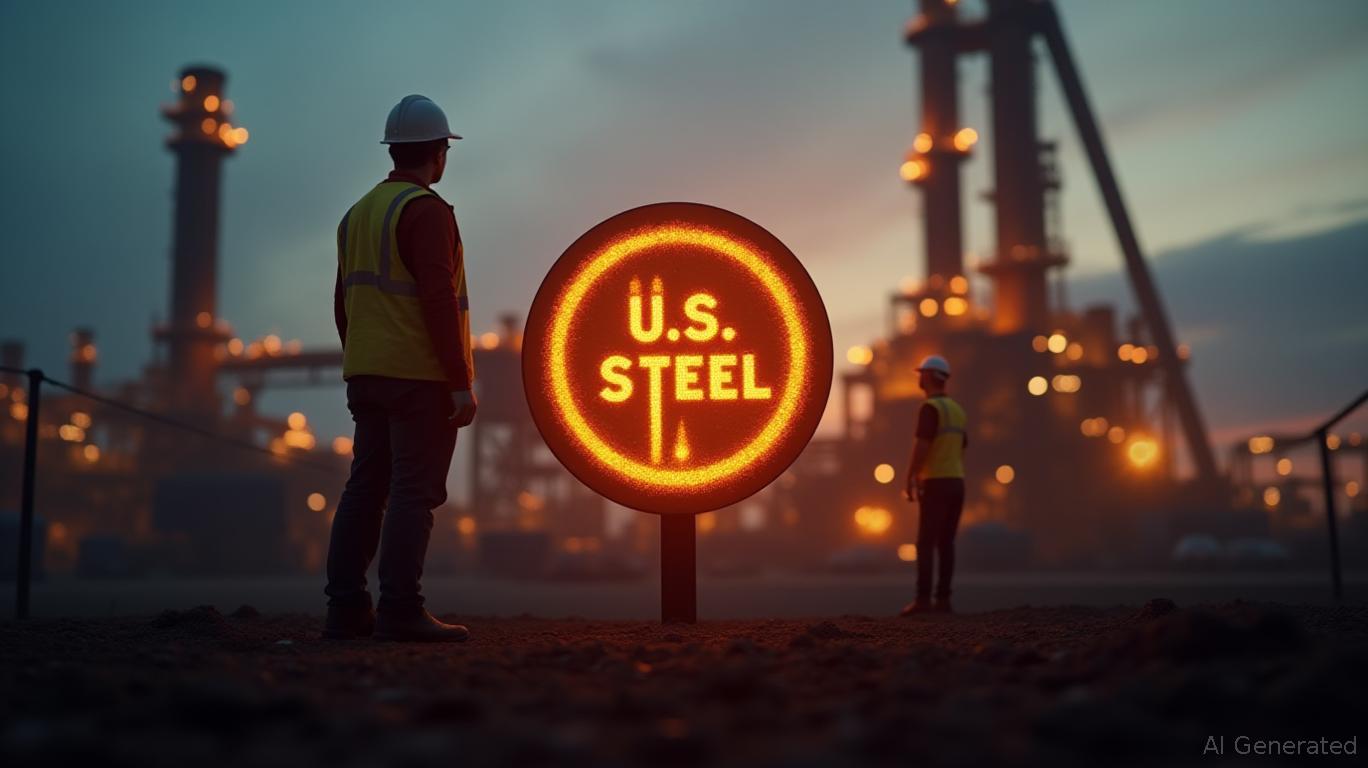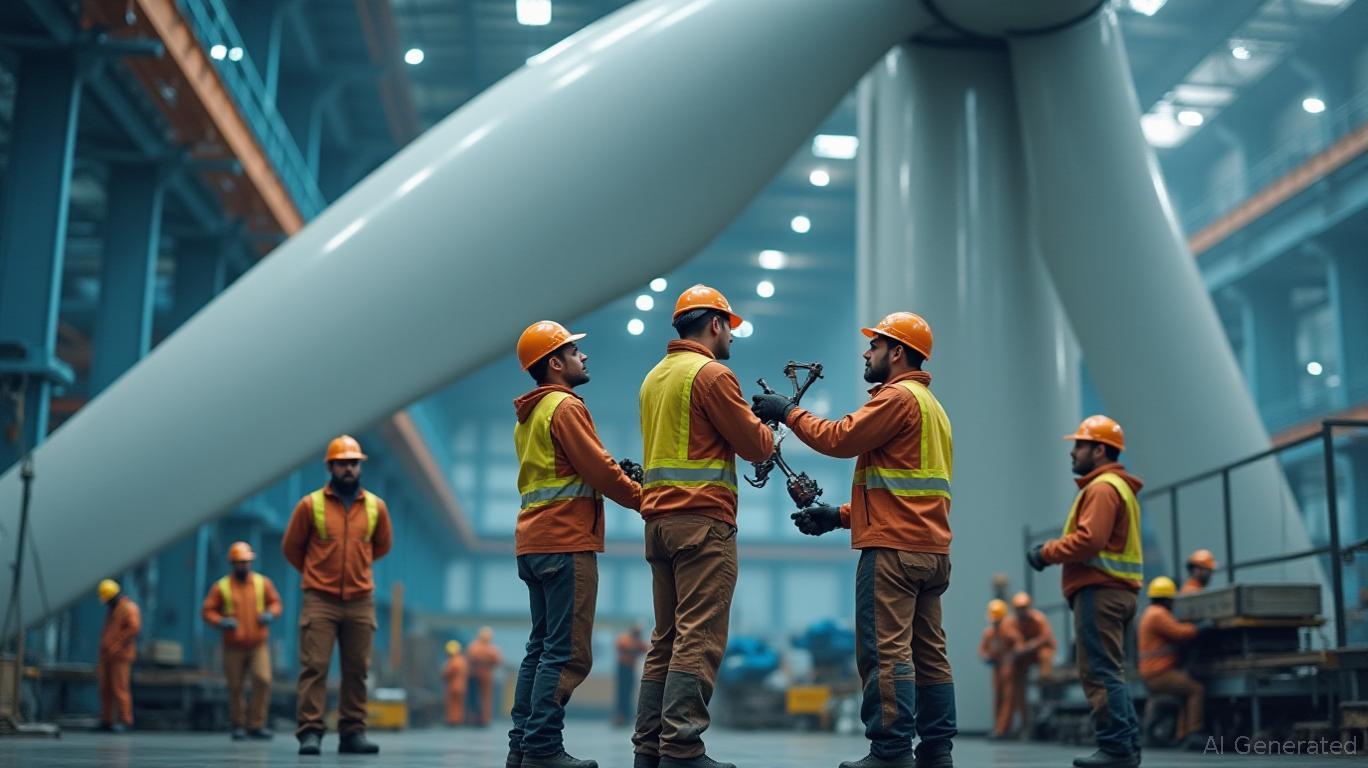Fortifying Portfolios Amid Steel Tariffs: Navigating Vulnerabilities and Seizing Geopolitical Opportunities
The U.S. decision to escalate steel and aluminum tariffs to 50% in 2025—a move framed as a national security imperative—has unleashed seismic shifts across global markets. While the immediate losers are evident, the ripple effects extend far beyond the steel sector, reshaping industries from energy to pharmaceuticals. For investors, this is not merely a defensive maneuver; it is a call to capitalize on asymmetries in supply chains, geopolitical realignments, and regulatory arbitrage. Here's how to navigate the chaos.

The Steel Sector: Winners and Losers in the New Tariff Regime
The steel industry itself is the clearest beneficiary. U.S. Steel (X) has secured a $14 billion partnership with Japan's Nippon Steel, leveraging advanced hydrogen-based production technologies to modernize its facilities. This move not only shields domestic jobs but also positions the company to dominate high-margin, low-carbon steel production—a critical edge in a world increasingly obsessed with ESG metrics.
However, the broader industry faces fragmentation. While U.S. producers thrive, Canadian and Mexican exporters—initially exempt—are now scrambling to adjust after exemptions were revoked. For investors, X remains a core holding, but consider diversifying into global players like ArcelorMittal (MT), which benefits from its scale and diversified geographic exposure.
Automotive and Manufacturing: The Hidden Costs of Protectionism
The automotive sector is ground zero for tariff-driven inflation. A 50% tariff on imported steel has already added $2,400 to the cost of an average new car, with ripple effects spreading to suppliers like Ford (F) and General Motors (GM). Margins are under siege, and consumer demand for luxury vehicles is cooling.
Actionable Insight: Short the automotive sector or hedge with inverse ETFs. Alternatively, pivot to parts suppliers with domestic production, such as BorgWarner (BWA), which has minimized reliance on imported components.
Energy and Clean Power: A Double-Edged Sword
The energy sector faces a paradox. While renewables like solar and wind are insulated from steel tariffs, infrastructure projects—think offshore wind turbines or transmission towers—are not. The clean power sector now faces a 15% cost increase for steel-dependent components, delaying projects and dampening investor appetite.

However, the silver lining lies in recyclers and scrap metal firms, which benefit from the premium placed on domestic steel. Ball Corporation (BLL), a leader in aluminum recycling, and Steinert Group (privately held but trackable via European indices) are prime plays on this theme.
Pharmaceuticals: Navigating the Unrelated but Strategic
While the steel tariffs do not directly impact drugmakers, the broader geopolitical climate is reshaping supply chains. Bristol Myers (BMY) and BioNTech (BNTX)—partners in cancer drug development—exemplify companies leveraging cross-border alliances to insulate against trade wars. Their collaboration, though unrelated to tariffs, underscores the value of geographically diversified R&D and manufacturing.
Investors should prioritize firms with domestic API (active pharmaceutical ingredient) production or partnerships that reduce reliance on China, which supplies 40% of U.S. generic drug APIs. Pfizer (PFE) and Merck (MRK), with robust in-house supply chains, are safer bets than tariff-exposed generics.
The Tariff-Resistant Portfolio: Where to Deploy Capital Now
- Defensive Plays:
- Recyclers and scrap metal firms: BLL, Steinert Group proxies via Xetra indices.
Tech and services: Firms like Microsoft (MSFT) or Amazon (AMZN), whose margins are less sensitive to physical goods.
Geopolitical Plays:
- Nippon Steel (5401.T): Benefits from U.S.-Japan partnerships and tech-driven efficiency.
European exporters pivoting to non-U.S. markets: Siemens Gamesa (SGRE) in renewables, Vestas (VWS.CO).
Short-Term Catalysts:
- U.S.-EU trade deal rumors: Monitor Daimler (DAI.GR) or BMW (BMW.GR) for potential rebounds if tariffs ease.
- China's retaliatory tariffs: Short Apple (AAPL) or Nike (NKE) if consumer goods face blowback.
Conclusion: Act Now or Risk Irrelevance
The tariff regime of 2025 is not a temporary storm but a new normal reshaping global trade. Investors who cling to outdated portfolios risk obsolescence. The playbook is clear:
- Exit automotive and tariff-sensitive manufacturers.
- Rotate into steel producers, recyclers, and pharmaceuticals with resilient supply chains.
- Hedge with inverse ETFs or geopolitical hedges like iShares MSCI Emerging Markets (EEM).
The next 12 months will separate the prudent from the passive. The time to act is now.


Comments
No comments yet